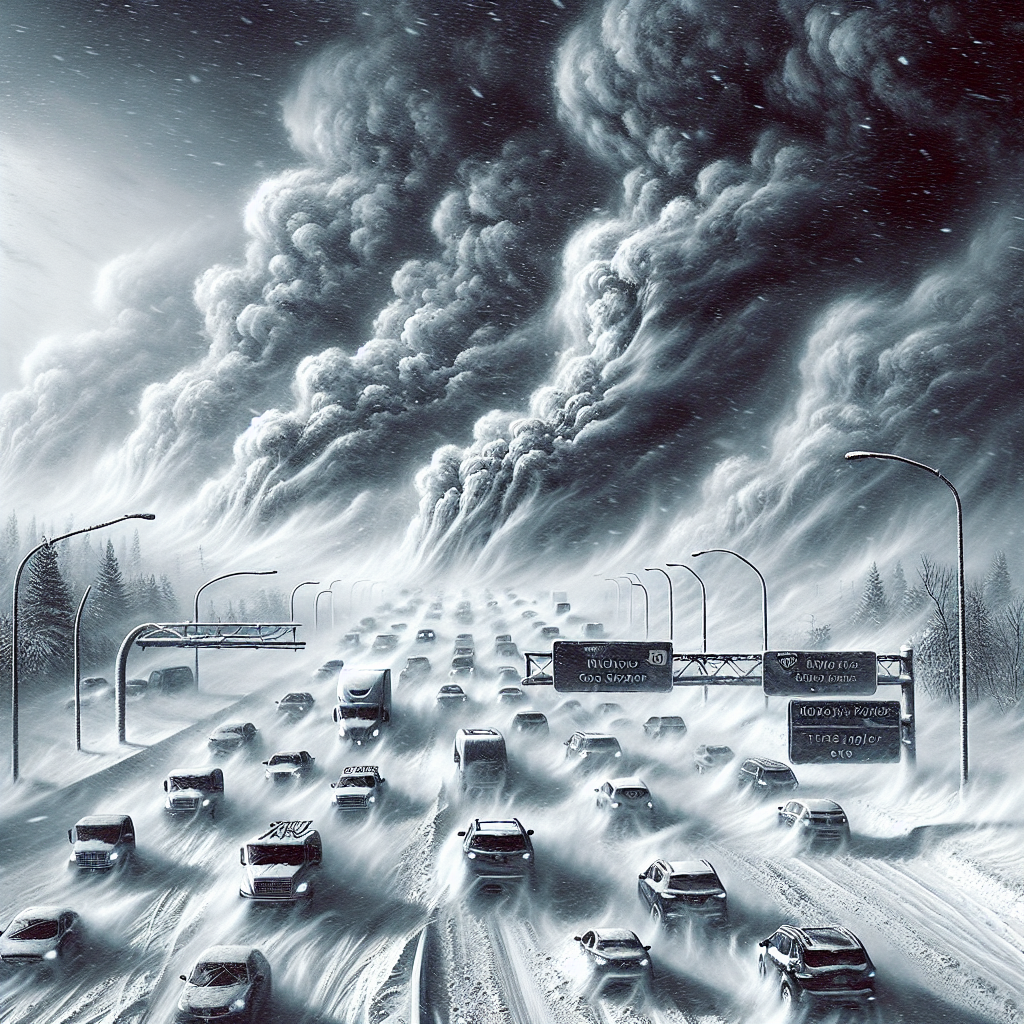Title: Midwest Braces for Severe Winter Storm Disruptions
A Storm of Epic Proportions: The Midwest in Crisis
As the Midwest buckles under the weight of a cross-country storm of historic proportions, residents have been left grappling with nature’s raw power. Blizzard conditions, piercing winds, and hazardous roads have combined to create a treacherous situation, disrupting lives and testing human resilience. With the storm gradually moving eastward, its devastating impact continues to ripple through affected communities.
This piece delves into the nature of the Midwest’s harsh winter face-off, its impact on daily life, and what communities are doing to weather the challenges. If you’ve ever experienced extreme weather, you’ll empathize deeply with the human stories emerging from this catastrophe.
Understanding the Storm: Magnitude and Movement
Why Is This Storm So Powerful?
Meteorologists describe this as a "once-in-a-decade event." But why? The ongoing storm is classified as a bomb cyclone – a rapidly intensifying low-pressure system. This weather phenomenon has drawn Arctic air southward and plunged temperatures to dangerous extremes. Combined with heavy snow and wind gusts surpassing 50 mph, road visibility has hit near-zero in many parts.
Regions Hit the Hardest
States such as South Dakota, Illinois, Minnesota, and Nebraska have reported record-breaking snow accumulations and wind chill temperatures as low as -40°F. Compounding the issue, secondary power lines have suffered damage amid freezing conditions. Thousands of residents continue to endure power outages, with warnings to remain indoors for safety. The storm isn't confined to just the Midwest, either—it’s inching eastward quickly, threatening disruptions in cities like Chicago, Detroit, and even parts of the Northeast.
Lives Turned Upside Down
A Haunting Calm Before the Blizzard
"We knew it was coming, but nothing could prepare us for the reality," says Kelly P., a mother of two in rural Iowa. Like many families, Kelly stocked up on essentials ahead of the storm, only to find herself without power for over 48 hours. Illustrating another challenge during such storms, her community lacks nearby emergency shelters, forcing neighbors to band together for heat sources and meals.
Treacherous Traveling Conditions
Closures have blanketed the transportation network. Hundreds of flights out of Kansas City, Minneapolis, and Chicago were canceled in anticipation of poor runway conditions. Meanwhile, major roadways like Interstate 80 have witnessed pile-ups involving dozens of vehicles due to icy patches and zero visibility.
"We’ve had some close calls," mentioned Jacob, a delivery truck driver, recounting his harrowing journey across Indiana. He shared how limited road clearing has made it impossible to carry out normal delivery schedules without endangering lives.
Community Spirit in Adversity
While the environment may be unrelenting, the Midwest's reputation for resolve shines through. Volunteers have checked in on vulnerable neighbors, and snowmobilers have offered transportation to stranded residents. Shelters and churches are also extending hours despite the challenges posed by dwindling resources.
Surviving the Storm: Tips and Tricks
Living through such storms demands adequate preparation and a level-headed response. Here are some key survival tips that residents in the Midwest are employing right now:
- Stay Indoors: No errand warrants braving a blizzard unless it's a life-threatening emergency.
- Stock Up Ahead of Warnings: From food supplies to extra batteries, preparation is key. Those with kerosene heaters stress their importance when grids fail.
- Limit Energy Use: For those relying on generators or limited power, conserving energy ensures more people have a fair share of resources.
- Keep a Safety Kit in Cars: Blankets, flashlights, and power banks make all the difference should your car break down in freezing temperatures.
Preparing for the Next Phase
Looking forward, meteorologists warn that while the snow may soon diminish, it might take days for regular recovery measures to restore infrastructure in the hardest-hit areas. Travelers are urged to consult updated advisories before attempting even short trips.
For farmers and business owners, financial loss looms as thawing frozen activities promise delays. The unseen toll is equally mental—days isolated in unforgiving weather tend to strain even the calmest individuals.
Q&A Section
Q: How long is the storm expected to last?
A: The bulk of the snow should taper off within the next two to three days, but freezing temperatures could continue for another week.
Q: Who is responsible for helping rural areas recover post-storm?
A: Local governments typically coordinate with FEMA and community organizations to restore critical resources like power and heating.
Q: What are common health risks during prolonged exposure to such weather?
A: Hypothermia, frostbite, and breathing issues caused by heaters and improper ventilation are significant concerns.
Q: Are safety shelters available, and how can I locate one?
A: Check with your local government hotline or city websites for designated warming and emergency shelters in your area.
Q: What states are at risk as the storm moves?
A: The eastern U.S., including parts of Pennsylvania, New York, and Massachusetts, is likely to experience less snow but equally frigid conditions.
Hashtags to Elevate Visibility
#SevereWeather #MidwestStorm #BlizzardAlert #WinterSafety #CommunityStrength #BombCyclone #EmergencyNews
Conclusion
At its core, this severe cross-country storm reminds us of nature’s untamed potential. It tests the limits of human preparedness while highlighting heartwarming acts of kindness amidst adversity. While the Midwest bears the brunt today, the lessons of resilience that arise from such crises resonate worldwide.
Stay safe, and if you're reading this from an impacted area, don’t hesitate to reach out for assistance. Nature commands respect—let's respond with caution and community. 🌨🍂
With multitudes of communities uniting to confront the elements, the global audience has much to gain from observing both the Midwest’s trials and triumphs. Breaking news may capture the raw reality here, but moving forward, we must reflect on adaptation amid climate challenges.
